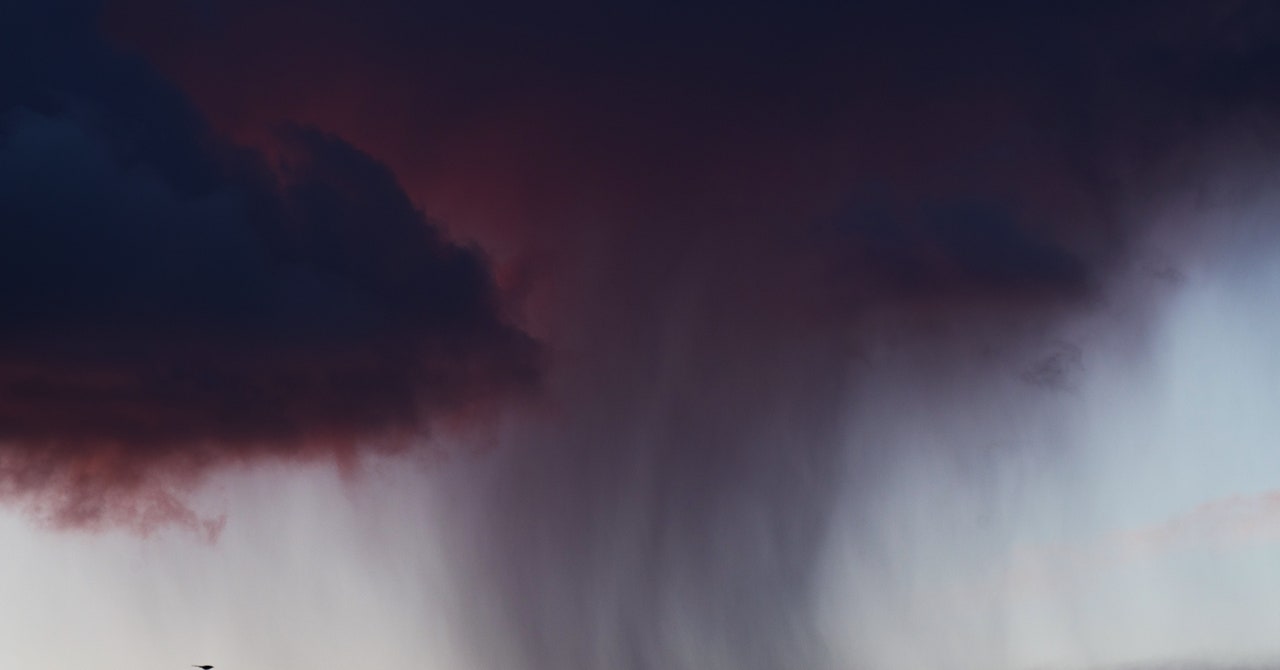
In March 2020, as the United Kingdom went into pandemic lockdown, climate scientist Ed Hawkins put out a call to people with time on their hands: He needed help turning nearly 350 years’ worth of archival rainfall reports into digital documents that modern researchers could easily use. To his surprise, 16,000 people volunteered. He attributes the outpouring of support to Covid-19 restrictions and a British fascination with meteorology. “We just love thinking about the weather,” he says.
Now, just over a year later, his group has released their work, a massive data set of upwards of 5 million observations extracted from the UK Meteorological Office’s paper records—the oldest dating to 1677. They represent more than 65,000 “Ten Year Rainfall Sheets,” most of them recorded by now long-dead amateur scientists and weather enthusiasts. Each sheet contains a decade’s worth of monthly precipitation totals for a specific rain gauge, plus annual totals, the name of the observer, and some information about where the gauge was located. Volunteers from what Hawkins dubbed Rainfall Rescue logged into Zooniverse, a citizen science platform, and transcribed information that had originally been written by hand. Their results were released in May as freely available files ready to be loaded into a spreadsheet.
The data “puts all the recent change we’ve seen into much longer-term context,” including several historical wet and dry periods that weren’t known before, says Hawkins, who teaches and conducts research at the University of Reading. While the earliest records date back to the 17th century, the most useful data comes from the decades leading up to 1862, the year when the UK’s official precipitation record began. Now, the Meteorological Office, also known as the Met Office, has usable records for the entire country starting around 1830—and for some localities starting around 1800.
These records are especially important to the UK because it is situated on the Atlantic storm track and especially vulnerable to floods and droughts, says Mark McCarthy, science manager at the Met Office’s National Climate Information Centre. That’s one reason why “everyone talks about weather all the time,” he says. “It’s ingrained in everything from small talk to planning flood defenses.”
Those extra decades of data offer scientists better insight into longterm natural variability in the climate. The data set contains granular information about several rare sequences of events that hadn’t been well understood before, including droughts in the 1830s and 1840s and flooding in 1852.
Linden Ashcroft, a climate scientist at the University of Melbourne, says digitizing past weather records is an urgent priority in order to quantify climate change and test models that simulate the atmosphere. The records are “the closest thing we have about what happened in years and decades gone by,” she says. Newly discovered historical data is valuable because it offers the opportunity to check the accuracy of the models’ calculations against what actually happened, she says.
In the UK, the data from Rainfall Rescue will be especially useful for authorities responsible for managing the risk of unusual meteorological events, such as 1-in-100-year or even 1-in-1,000-year floods. The country’s water companies rely on rainfall in the winter and spring to refill reservoirs for drier summer months, so an unanticipated drought could be devastating, Hawkins says.
In one sense, Hawkins says, Rainfall Rescue is just the latest phase in an endeavor that started when “a chap called Richard Townley started rainfall measuring in 1677 at his rather large mansion house in northern England.” A friend of the groundbreaking chemist and early experimental scientist Robert Boyle, Townley developed instruments to measure precipitation and published some of his data in early issues of the Philosophical Transactions of the Royal Society, the world’s longest-running scientific journal. By 1820, there were a few dozen rain gauges across the country, including one operated by Luke Howard, the amateur meteorologist who developed the cloud-naming system still in use today. In 1860, a group called the British Rainfall Organization standardized methods and began collecting data more systematically. The Met Office absorbed the organization in 1919 and became the custodian of its archives, including the Ten Year Rainfall Sheets.


